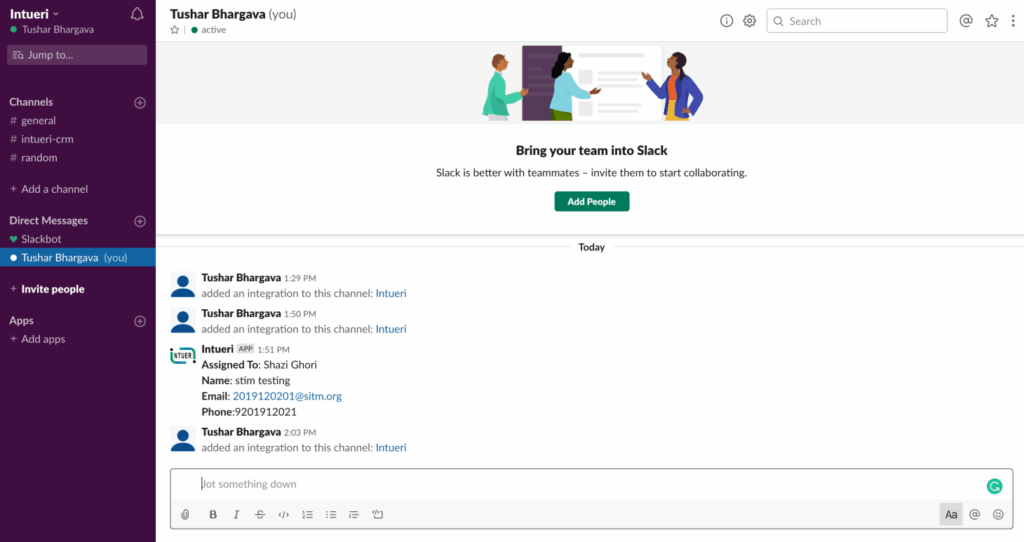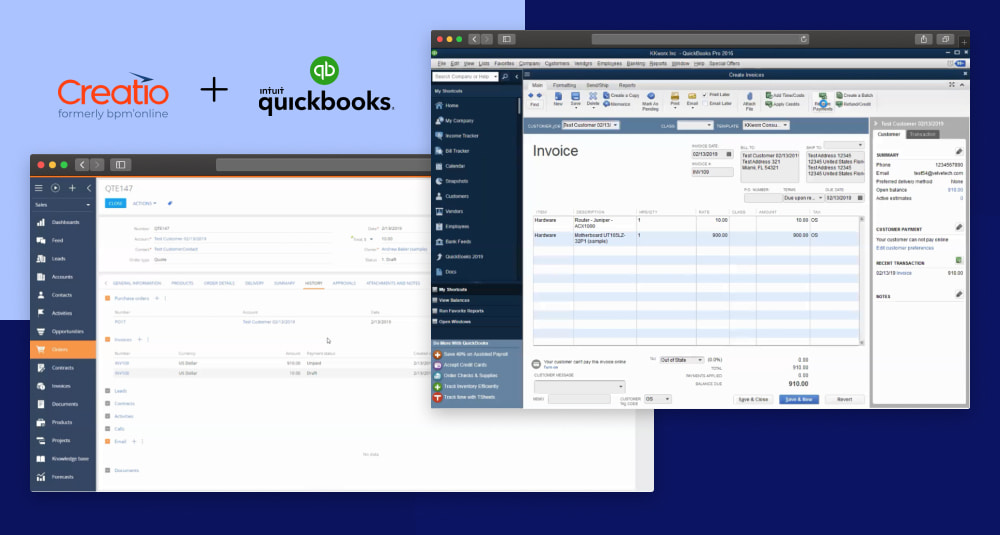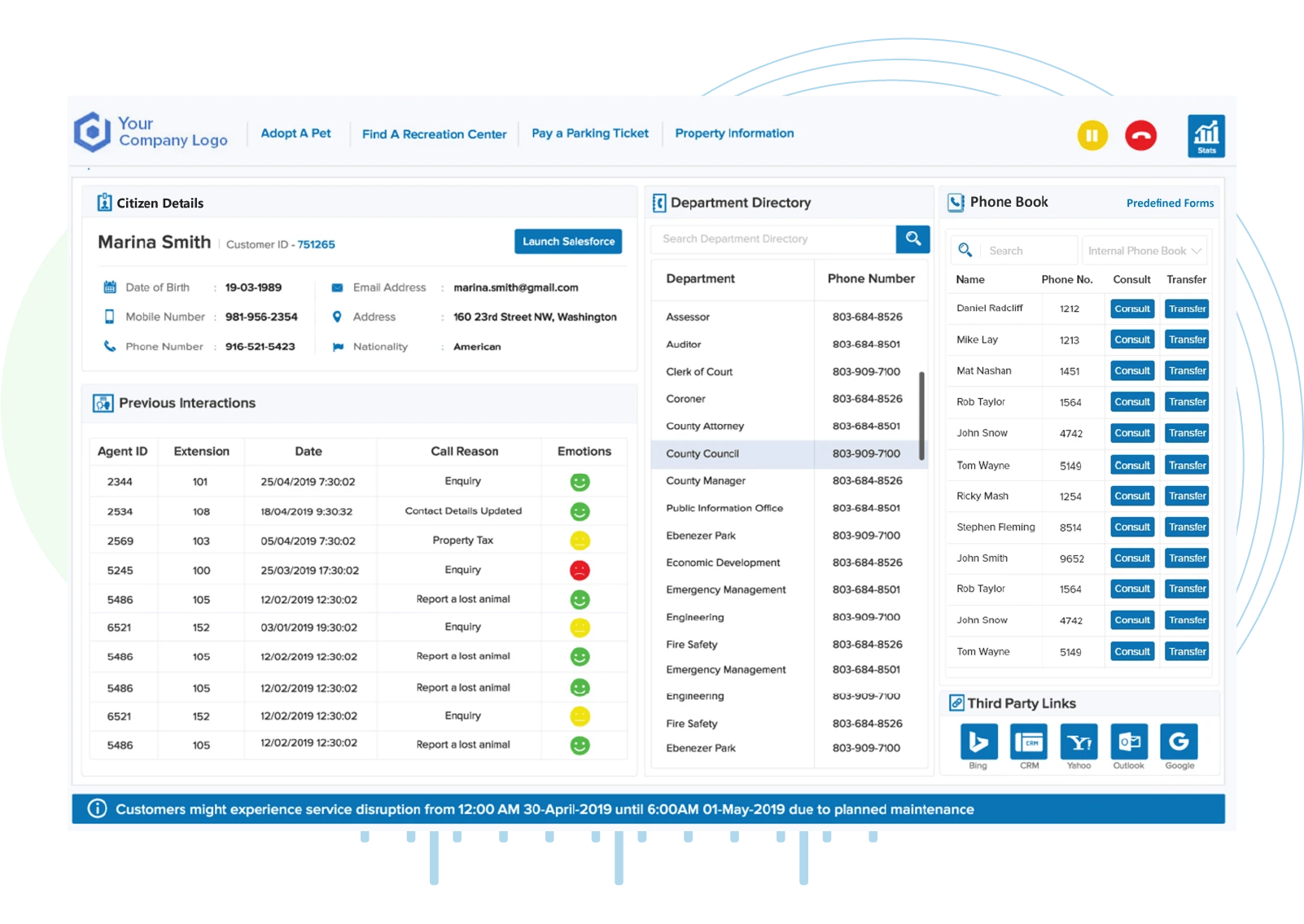
Supercharge Your Workflow: A Deep Dive into CRM Integration with Slack Channels
In today’s fast-paced business environment, staying organized and connected is paramount. We’re constantly juggling multiple tasks, communicating with various teams, and managing a sea of information. This is where the power of integration comes into play, particularly when it comes to your CRM (Customer Relationship Management) system and Slack channels. By seamlessly connecting these two platforms, you can unlock a new level of efficiency, collaboration, and ultimately, customer satisfaction.
Why Integrate CRM with Slack? The Benefits Unveiled
Think about your daily routine. How much time do you spend switching between applications, searching for information, and trying to keep everyone on the same page? Integrating your CRM with Slack can drastically reduce these inefficiencies, offering a multitude of benefits:
- Enhanced Communication: Get real-time updates from your CRM directly within your Slack channels. No more sifting through emails or logging into different platforms to stay informed.
- Improved Collaboration: Foster seamless teamwork by sharing CRM data, updates, and notifications within your team’s dedicated Slack channels.
- Increased Productivity: Automate repetitive tasks and eliminate the need for manual data entry, freeing up your team to focus on more strategic initiatives.
- Better Decision-Making: Access critical customer information and insights instantly within Slack, empowering your team to make informed decisions faster.
- Streamlined Workflow: Automate processes like lead assignment, deal updates, and customer support requests, creating a more efficient workflow.
- Reduced Errors: Minimize the risk of human error by automating data synchronization between your CRM and Slack.
Key Features of CRM Integration with Slack
The specific features available will vary depending on the CRM and Slack integration you choose, but here are some common functionalities you can expect:
Real-Time Notifications
Receive instant notifications about important CRM events, such as:
- New leads: Get notified when a new lead is created in your CRM.
- Deal updates: Track the progress of deals as they move through the sales pipeline.
- Task assignments: Receive alerts when tasks are assigned to you or your team members.
- Customer support tickets: Stay informed about new support tickets and their status.
Data Synchronization
Automatically sync data between your CRM and Slack, ensuring that everyone has access to the most up-to-date information. This can include:
- Contact information: Access customer contact details directly within Slack.
- Deal details: View deal values, stages, and other relevant information.
- Activity logs: Track customer interactions, such as calls, emails, and meetings.
Collaboration Tools
Use Slack’s collaboration features to enhance teamwork and communication around CRM data:
- Channel-specific updates: Share CRM updates in dedicated Slack channels for specific teams or projects.
- Direct messaging: Communicate directly with team members about specific customer records or deals.
- File sharing: Share relevant documents, such as contracts or proposals, within Slack.
Customization Options
Tailor the integration to meet your specific needs and preferences. Many integrations offer customization options, such as:
- Trigger-based actions: Set up automated actions based on specific CRM events.
- Custom fields: Display custom CRM fields within Slack.
- User permissions: Control who has access to specific CRM data within Slack.
Popular CRM Systems and Their Slack Integrations
Several popular CRM systems offer seamless integrations with Slack. Here’s a look at some of the leading options:
Salesforce
Salesforce, a leading CRM platform, provides robust integration capabilities with Slack. Users can receive real-time notifications about sales opportunities, track deal progress, and collaborate on customer accounts directly within Slack. The integration allows users to:
- View Salesforce records within Slack.
- Receive notifications about lead creation, opportunity updates, and task assignments.
- Share Salesforce data and collaborate on customer accounts within Slack channels.
HubSpot
HubSpot, a popular CRM and marketing automation platform, offers a user-friendly Slack integration. Users can receive notifications about new leads, track deal stages, and collaborate on sales activities within Slack. The integration enables users to:
- Receive real-time notifications about sales and marketing activities.
- Share HubSpot data and collaborate on customer accounts.
- Access HubSpot contact information and deal details within Slack.
Zoho CRM
Zoho CRM, a comprehensive CRM solution, provides a flexible Slack integration. Users can customize notifications, automate tasks, and collaborate on customer accounts within Slack. The integration allows users to:
- Receive notifications about lead creation, deal updates, and task assignments.
- Automate tasks, such as creating deals and updating customer information.
- Share Zoho CRM data and collaborate on customer accounts within Slack channels.
Pipedrive
Pipedrive, a sales-focused CRM, offers a straightforward Slack integration. Users can receive notifications about deal updates, track sales activities, and collaborate on opportunities within Slack. The integration lets users to:
- Receive real-time notifications about deal progress and sales activities.
- Share Pipedrive data and collaborate on opportunities within Slack channels.
- Access Pipedrive contact information and deal details within Slack.
Other CRM Systems
Many other CRM systems, such as Microsoft Dynamics 365, SugarCRM, and Freshsales, also offer Slack integrations. The specific features and capabilities may vary, so it’s essential to research the integration options available for your chosen CRM platform.
Setting Up Your CRM and Slack Integration: A Step-by-Step Guide
The setup process will vary depending on your specific CRM and the integration you choose. However, here’s a general step-by-step guide to get you started:
- Choose Your Integration: Select the integration that’s compatible with your CRM and Slack accounts. Many CRMs have pre-built integrations available in the Slack App Directory.
- Install the Integration: Within Slack, install the integration app for your CRM. This usually involves authorizing Slack to access your CRM data.
- Connect Your Accounts: Connect your CRM account to your Slack workspace. You’ll likely need to log in to your CRM account and grant the integration permission to access your data.
- Configure Notifications: Customize the notifications you want to receive in Slack. Decide which events trigger notifications and where they should be posted (e.g., specific channels or direct messages).
- Test the Integration: Send a test notification or create a test record in your CRM to ensure the integration is working correctly.
- Customize Settings: Explore the integration’s settings to customize features such as data synchronization, user permissions, and automated actions.
- Train Your Team: Provide training to your team on how to use the integration and leverage its features effectively.
Best Practices for Successful CRM and Slack Integration
To maximize the benefits of your CRM and Slack integration, consider these best practices:
- Define Clear Goals: Before setting up the integration, define your goals. What do you want to achieve with the integration? What specific problems are you trying to solve?
- Choose the Right Channels: Organize your Slack channels strategically. Create dedicated channels for specific teams, projects, or customer accounts to keep information organized and relevant.
- Customize Notifications: Tailor your notifications to be informative and actionable. Avoid overwhelming your team with unnecessary alerts.
- Establish Communication Guidelines: Set clear guidelines for how to use the integration and communicate within Slack channels.
- Monitor and Optimize: Regularly review your integration and make adjustments as needed. Analyze your team’s usage and identify areas for improvement.
- Provide Training and Support: Ensure your team understands how to use the integration and has access to the necessary support resources.
- Prioritize Data Security: Implement security measures to protect sensitive customer data, such as restricting access to specific channels and enabling two-factor authentication.
Troubleshooting Common Issues
While CRM and Slack integrations are generally reliable, you may encounter some common issues. Here’s how to troubleshoot them:
- Notifications Not Appearing: Check your notification settings within the integration and Slack. Ensure that notifications are enabled and configured correctly. Verify that the integration is connected to the correct Slack channels.
- Data Not Synchronizing: Verify that the data synchronization settings are configured correctly. Check your CRM and Slack account permissions to ensure the integration has access to the necessary data.
- Errors During Setup: Review the integration’s documentation for troubleshooting steps. Contact the integration’s support team for assistance.
- Incorrect Information Displayed: Double-check the data mapping settings to ensure that the correct CRM fields are being displayed in Slack.
The Future of CRM and Slack Integration
The integration of CRM and Slack is constantly evolving, with new features and capabilities being added regularly. Here are some trends to watch for:
- Advanced Automation: Expect to see more sophisticated automation features that streamline workflows and reduce manual tasks.
- AI-Powered Insights: AI-powered integrations will provide even more valuable insights and recommendations based on CRM data.
- Enhanced Collaboration: Look for improved collaboration tools that make it easier for teams to work together on customer accounts and deals.
- Mobile Accessibility: Mobile-friendly integrations will allow users to access CRM data and collaborate within Slack from anywhere.
- Deeper Integration with Other Tools: CRM and Slack integrations will continue to expand to connect with other business tools, such as project management software and email marketing platforms.
The possibilities are vast, and the potential for businesses to improve their efficiency, collaboration, and customer satisfaction is significant. As technology continues to advance, we can expect even more innovative and powerful integrations that will transform the way we work.
Conclusion: Embrace the Synergy of CRM and Slack
Integrating your CRM with Slack channels is a strategic move that can significantly enhance your business operations. By connecting these two powerful platforms, you can unlock a wealth of benefits, including improved communication, collaboration, productivity, and decision-making. With the right setup, best practices, and continuous optimization, you can create a streamlined workflow that empowers your team to excel and deliver exceptional customer experiences.
As the business landscape continues to evolve, the synergy between CRM and Slack will become even more crucial. Embrace this integration and position your business for success in the competitive market.


